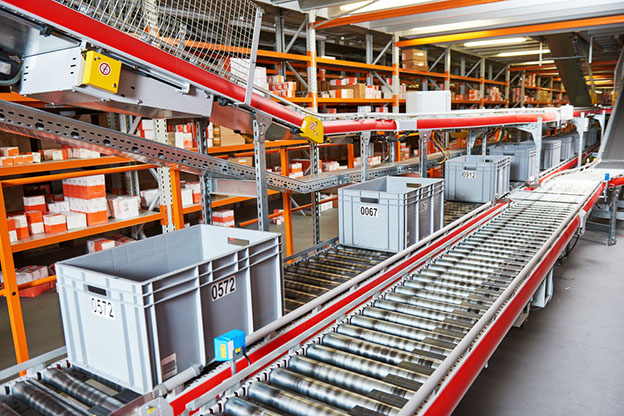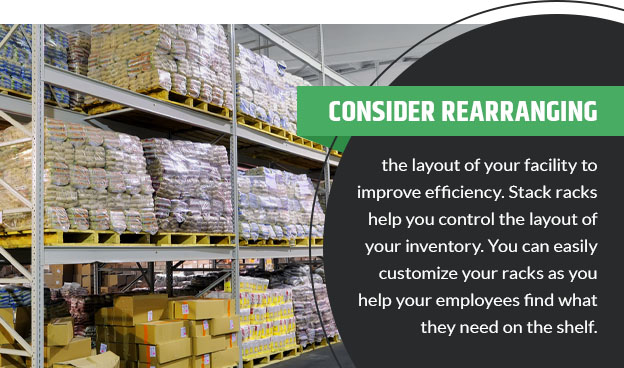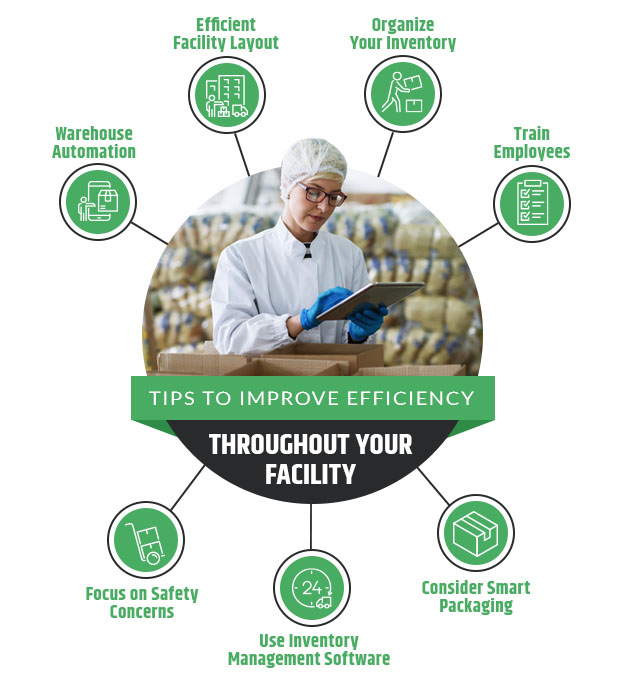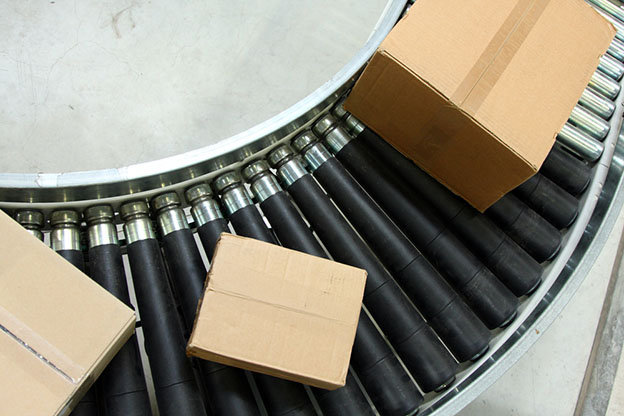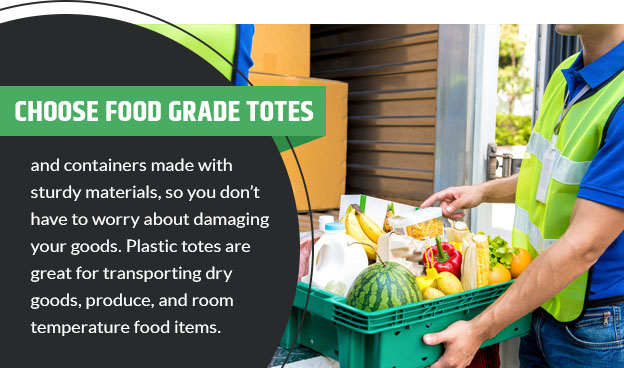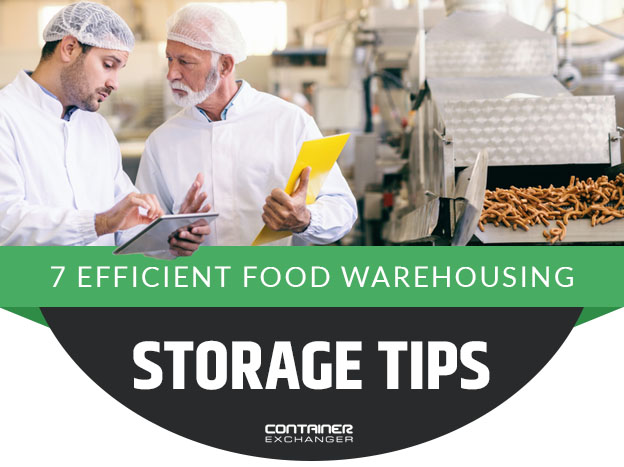
Storing food and beverage products is vastly different from handling consumer goods like apparel, electronics, and furniture. Food and beverages will only last so long on the shelf. If these products expire or are mishandled and stored improperly as they make their way through the supply chain, and your products might end up in the local landfill instead of the homes and mouths of consumers.
Changing consumer preferences are also shaking up the industry. As more individuals choose to order their groceries online, companies need to adjust their operations accordingly. Instead of dropping off large quantities of goods at various retail outlets, you may have to deliver your products directly to individual consumers or local distribution centers. This means your facility needs to stay flexible as you respond to changes in demand and new delivery requirements.
U.S. food and beverage e-commerce sales are expected to reach $38.16 billion by 2021, nearly doubling over just two years. From adopting the latest technology to utilizing innovative food packaging techniques, these food warehousing storage tips will improve your operations amid this sea change within the industry.
Efficiency=Organization, Storage, and Training
Efficiency is the name of the game in the warehousing industry, especially when it comes to handling food and beverage products. You need to move your inventory through the supply chain as quickly as possible if you want to maximize your throughput. The longer it takes to move your goods from the loading dock to the shelf and vice-versa, the higher the chances some of your products may not make it to the finish line. Some of your products may expire during this time, which will disrupt your operations and lower your bottom line.
Use these tips to improve efficiency throughout your facility:
Warehouse Automation
To improve material handling efficiency, consider automating certain aspects of your supply chain. Use automatic unloading equipment to quickly de-palletize incoming shipments. Conveyor belts will then send your products from the loading dock to the receiving station. Automatic pickers and stockers will then sort and organize your inventory on the shelf.
This is what’s known as “flow-through” sortation. According to some in the industry, automation can speed up the receiving, sorting, and shipping process for perishable goods by as much as nine days. Going from 11 days to just two makes a world of difference.
Your inventory will be less likely to spoil, so you can increase your bottom line as much as possible. You also won’t have to worry about routine errors and product mishandling slowing down your operations. You can calculate the exact amount of time needed to move your products through your facility, so you never have to worry about missing a deadline again.
Stack Racks and Facility Layout
Regardless of whether you decide to invest in automation, consider rearranging the layout of your facility to improve efficiency. Stack racks are a space-saving storage system that help you control the layout of your inventory. You can easily customize your racks as you help your employees find what they need on the shelf.
If you need more space, you can always adjust the layout as your warehousing needs change. Create separate aisles for your products to improve organization. Organize shelves and aisles according to demand to speed up the retrieval and sorting process.
In the food and beverage industry, it’s best to use a first-in-first-out (FIFO) storage system, so items that have been sitting on the shelf the longest are the first ones out of your facility. This helps you avoid spoilage. Arrange your products on the shelf to keep important information visible, including the expiration date, contents, weight, and SKU number. If something has expired, your employees can quickly take these products off the shelf and set them aside.
Arrange your stack racks to make sure your employees have enough room to navigate your facility. They shouldn’t have to worry about running into each other, slipping or falling as they move in and out of different aisles. Use proper signage, energy-efficient lighting, and convex mirrors to improve navigation and visibility.
Organizing Your Inventory
To speed up the retrieval process, you may want to keep some of your inventory visible and easily accessible. Use wire baskets and food-grade nesting totes, so your employees can quickly grab the items they need without having to mess with lids.
With nesting totes, your employees can easily reach in and take what they need without having to sort through dissimilar items. Wire baskets force your employees to spend more time looking at your products and less time reading signs and barcodes.
Use bulk storage containers to further increase efficiency. Gallon drums and IBC totes will help you move and package large quantities of items in less time. Your employees can use a forklift to quickly load/unload inventory instead of messing with dozens of separate containers.
You can also color-code your inventory to improve the picking process. Use brightly colored totes and trays to help your employees quickly differentiate between your products.
To help you make the most of your warehouse space, use collapsible storage containers. As soon as you’re done loading/unloading your inventory, you can neatly stack empty containers to the side, so you and your team can move freely throughout the space.
Employee Training
Your warehouse is only as good as the worst member of your team. As a facility manager, make sure your employees have everything they need to complete routine tasks as quickly as possible. You should have routine processes down to an exact science, so your employees don’t waste time looking for information. When it comes to receiving, sorting, picking, and shipping, post clear instructions around your facility to keep your employees in the know.
You can also use what’s known as a pick-to-voice warehouse management system to guide your employees through the facility. Instead of having your staff members read a spreadsheet or scan a barcode, they will receive verbal instructions on which products to pick via an earpiece. They will then verbally repeat the name of the product or its SKU number to verify they have the correct item. This verbal interaction can reduce confusion and product handling times to increase efficiency. Your employees can stay focused on the item in question instead of juggling different documents and pieces of equipment.
Make sure your employees know how to visually inspect your products before bringing them to the loading dock and preparing them for shipment. Machines won’t always know if your goods are still edible, so it’s best to have your workers double-check your inventory.
Even if they haven’t expired, your goods may be damaged from time to time. Some products may expire prematurely, while others may have been mishandled along the way. Have your employees inspect your goods for quality assurance as soon as they come into the facility and before they go out for delivery.
Safety and Sanitation
Now let’s focus on the safety concerns of your warehouse facility, so you can maintain your reputation in the food and beverage industry. According to the U.S. Department of Agriculture, anywhere between 30 and 40% of the country’s food supply goes to waste. Around 31% of food supplies are lost at the retail and consumer levels, resulting in approximately 133 billion pounds and $161billion worth of food in 2010 alone.
Food waste often comes down to spoilage and cross-contamination. Without using proper equipment and safety techniques, your employees could pass bacteria onto some of your products, leading to the spread of foodborne illnesses and diseases. Leaving your products on the shelf or out in the sun for too long can easily lead to spoilage.
You can do your part to reduce spoilage and waste by better managing your inventory. Use these tips to improve safety and sanitation:
Inventory Management Software
Use inventory management software to monitor your inventory as it moves through the supply chain. Typically, as soon as your employees scan incoming items, they will be logged in the system, so you know how much inventory you have on hand at any given time.
You can then monitor the flow and velocity with which your goods move through the supply chain. With automatic alerts, you will always know when to order more inventory. This helps you avoid overstock, so you don’t accidentally order new supplies before you run out of your current inventory. You won’t have to worry about your products going to waste on the shelf.
Inventory management software also helps you monitor the safety and viability of your current inventory. Enter as much information about your products into the system, including the arrival time and date, place of origin, expiration date, and other important details.
If some of your products expire, the system will alert you automatically. In the event of foodborne illness, you can trace your supplies and products back to their source to get to the bottom of the situation.
Smart Packaging
You may also want to consider investing in what’s known as smart packaging. Certain kinds of packages and containers come with automatic thermostats, GPS systems, and micro-films to prevent cross-contamination and tampering.
With this kind of technology, you can easily trace the location and temperature of your goods as they make their way through the supply chain.
If your goods are rerouted or delayed for whatever reason, you can quickly coordinate with the driver and customer to prevent spoilage and the spread of illness. If your goods get too hot or too cold during their journey, you can take similar precautions to keep your customers safe.
With tamper-evident packaging, you and your business partners will always know whether your goods have been manipulated or altered along the way. Smart Packaging improves quality assurance throughout the supply chain, so everyone stays on the same page.
Food-Grade Containers and Quality Assurance
Finally, it’s time to reconsider the kinds of containers and packages you use to move your products through the supply chain. Depending on your warehousing needs, you need to make sure your products stay intact and insulated to prevent spoilage and waste. Some of your products may be exposed to outside substances along the way, while others may be crushed or damaged. Learn about some of the best containers and racks for food storage:
Food-Grade Totes and Containers
Choose food grade totes and containers made with sturdy materials, so you don’t have to worry about damaging your goods. Plastic totes are a great choice for transporting dry goods, produce, and room temperature food items.
You can also use gallon drums to ship and store large quantities of fluids or dry ingredients, like rice, flour, or grains. Use insulated containers to maintain specific temperatures. These kinds of containers should be made with thick, insulating walls for more quality control. Transport baked goods with bakery trays to keep your inventory in mint condition.
If you decide to buy used containers or reuse your old ones, make sure you and your team thoroughly inspect all your containers before putting them back into the supply chain. Leftover residue, dirt, debris, and even rainwater can easily contaminate your goods. Cracks and structural damage can also leave your goods vulnerable to contamination and bacteria.
Your employees should have the inspection process down pat to improve efficiency. There should be clear instructions for inspecting, cleaning, and rinsing the container. Designate and label dirty vs. clean containers to prevent mishaps and confusion around your facility. Avoid leaving your containers in unsupervised areas or out in the sun for too long to keep them in proper condition.
These tips are designed to help you stay nimble in this rapidly changing industry. It’s all about getting your goods out the door and to their destination as quickly and as safely as possible. Keep these ideas in mind and share them with your business partners to improve efficiency and quality assurance at every turn.
